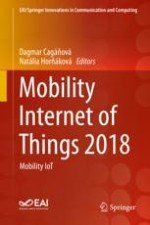2020 | OriginalPaper | Buchkapitel
Smart Collaborative Learning Environment for Visually Impaired Children
verfasst von : Ruhiyati Idayu Abu Talib, Predrag K. Nikolic, Mohd Shahrizal Sunar, Rui Prada
Erschienen in: Mobility Internet of Things 2018
Aktivieren Sie unsere intelligente Suche, um passende Fachinhalte oder Patente zu finden.
Wählen Sie Textabschnitte aus um mit Künstlicher Intelligenz passenden Patente zu finden. powered by
Markieren Sie Textabschnitte, um KI-gestützt weitere passende Inhalte zu finden. powered by
